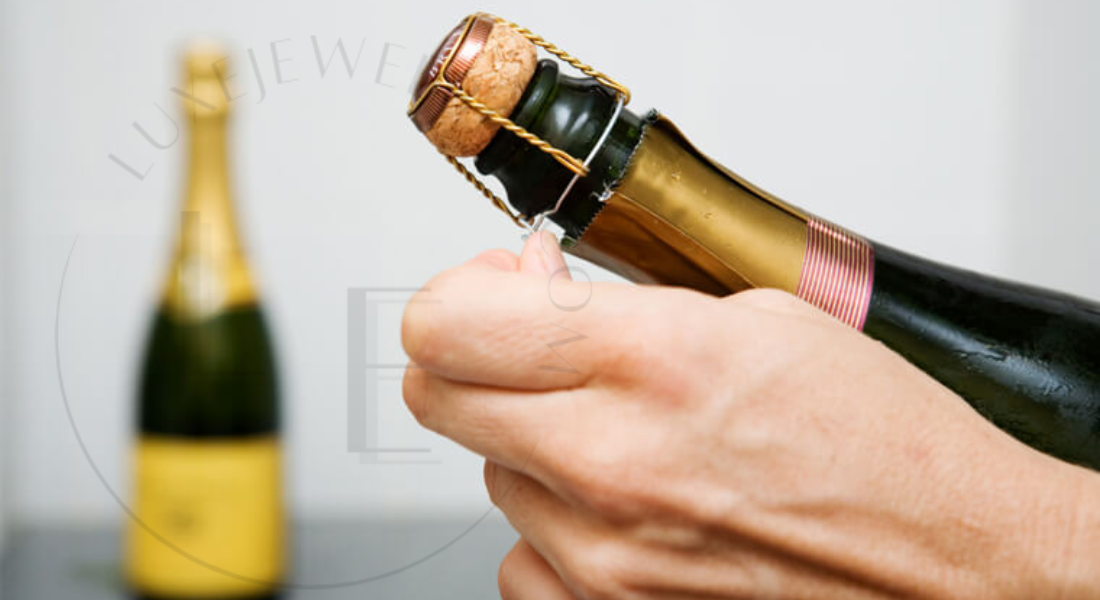Blog
A Complete Guide to Champagne: The Elegance of Bubbly Wines
Champagne is one of the most renowned and celebrated wines in the world, often associated with luxury, celebration, and sophistication. Its distinct bubbles, elegant taste, and rich history make it a favorite choice for many. Whether you are a connoisseur or a newcomer to the world of Champagne, understanding its origins, varieties, and the best ways to enjoy it can elevate your appreciation for this iconic beverage.
The History and Origins of Champagne
The story of Champagne begins in the Champagne region of northeastern France, where the ideal climate and soil conditions allowed for the cultivation of high-quality grapes. The first references to the bubbly wine we now know as Champagne date back to the 17th century. However, it wasn’t until the 19th century that the production methods we associate with Champagne today were perfected.
Initially, Champagne was not sparkling. The region’s cool climate and the fermentation process caused the wine to undergo a secondary fermentation in the bottle, creating those famous bubbles. The French Benedictine monk Dom Pérignon is often credited with refining the techniques for producing Champagne, though the process was a gradual evolution over time. His work laid the foundation for what would become one of the most sought-after drinks in the world.
The Varieties of Champagne: Types You Should Know
There are several types of Champagne, each with unique characteristics. Understanding the differences between them is crucial when selecting the right bottle for a particular occasion.
- Non-Vintage Champagne: This type of Champagne is a blend of wines from multiple years. It is the most commonly found Champagne and offers consistency in taste. Non-vintage Champagnes are often used for everyday celebrations and casual drinking.
- Vintage Champagne: Vintage Champagne is made from grapes harvested in a single year, and only the best years are selected for this type. These Champagnes are often more complex and have deeper flavors, making them ideal for special occasions or aging.
- Blanc de Blancs: Made exclusively from Chardonnay grapes, Blanc de Blancs Champagnes are known for their light, crisp, and refreshing flavors. They are often regarded as the most elegant type of Champagne, with a delicate balance of fruitiness and acidity.
- Blanc de Noirs: In contrast to Blanc de Blancs, Blanc de Noirs is made from red grape varieties such as Pinot Noir and Pinot Meunier. These Champagnes tend to have a fuller body and richer flavors, often with more depth and complexity.
- Rosé Champagne: Rosé Champagne is made by either adding a small amount of red wine to the blend or allowing the skins of red grapes to stay in contact with the juice for a brief period. This results in a pink hue and a more fruity, aromatic profile.
- Prestige Cuvée: These are the top-tier Champagnes produced by prestigious houses. Prestige Cuvées are made from the finest grapes and aged longer to develop more refined flavors. They represent the highest quality and craftsmanship in Champagne production.
How Champagne is Made: The Traditional Method
The production of Champagne follows a rigorous process, known as the traditional or “méthode champenoise” method. This method involves several critical steps that contribute to the wine’s signature bubbles and refined taste.
- Harvesting and Pressing: Grapes are handpicked and then pressed gently to extract the juice. The juice is fermented in stainless steel tanks or oak barrels, where the first fermentation occurs.
- Blending: After the first fermentation, the wines are blended to create the desired flavor profile. This is where the art of Champagne making comes into play, as winemakers combine wines from different vineyards, grape varieties, and vintages to achieve a consistent style.
- Secondary Fermentation: The wine is bottled with a small amount of sugar and yeast, which triggers a second fermentation in the bottle. This fermentation produces carbon dioxide, creating the bubbles that Champagne is famous for.
- Aging: After the second fermentation, the Champagne is left to age in the bottle for several months or even years. This aging process allows the flavors to develop and the wine to become more complex.
- Riddling and Disgorging: To remove the yeast sediment, bottles are gradually tilted and rotated in a process called riddling. Once the sediment has settled near the neck of the bottle, the neck is frozen, and the sediment is ejected in a process called disgorging.
- Dosage and Corking: Finally, a small amount of sugar is added to adjust the sweetness level, and the bottle is corked. The Champagne is then ready for sale, with the signature bubbles and elegant taste that make it so special.

How to Properly Serve Champagne
Serving Champagne correctly enhances the overall drinking experience. The way Champagne is chilled, poured, and served can affect its taste and presentation. Here are some tips to ensure you get the most out of your Champagne:
- Chill Your Champagne: Champagne should be served chilled, but not too cold. The ideal temperature is around 45°F to 50°F (7°C to 10°C). You can chill it in the fridge for a few hours before serving or place it in an ice bucket for about 20 minutes.
- Choose the Right Glass: The traditional Champagne flute is designed to showcase the bubbles and concentrate the aromas. While flutes are still commonly used, some experts recommend a white wine glass, which allows the Champagne to breathe and release more of its delicate fragrances.
- Pouring Champagne: When pouring Champagne, tilt the glass at a 45-degree angle and pour gently to avoid disturbing the bubbles. Fill the glass about one-third full to allow the wine to breathe and show off its effervescence.
- Pairing Champagne with Food: Champagne is incredibly versatile when it comes to food pairings. The acidity and effervescence of Champagne can complement a wide range of dishes, from light appetizers to rich seafood, cheeses, and even fried foods. For a classic pairing, try Champagne with oysters, caviar, or a selection of fine cheeses.
The Importance of Champagne in Celebrations
Champagne has long been a symbol of celebration and joy. It is often uncorked to mark special occasions such as weddings, New Year’s Eve, promotions, or anniversaries. The act of popping a bottle of Champagne is associated with joy and excitement, and its sparkling nature adds a sense of elegance and festivity to any event.
In recent years, Champagne has also become popular in informal settings, as its versatility and range of flavors make it suitable for a variety of occasions. Whether you’re toasting with friends or enjoying a quiet evening, Champagne is the drink that elevates the moment.
The Best Champagne Houses to Know
Some of the world’s most renowned Champagne houses have contributed to the global reputation of Champagne as a premium product. These houses have a long tradition of producing some of the finest Champagnes. Here are a few names to look out for:
- Moët & Chandon: One of the largest and most well-known Champagne houses, Moët & Chandon is synonymous with luxury and high quality.
- Veuve Clicquot: Known for its rich and bold flavors, Veuve Clicquot has become a symbol of excellence in Champagne production.
- Dom Pérignon: Perhaps the most famous Champagne brand, Dom Pérignon is renowned for producing exquisite, vintage-only Champagnes that are celebrated worldwide.
- Krug: Known for its prestigious and premium offerings, Krug is considered one of the finest Champagne houses, producing complex and deeply flavorful wines.
- Bollinger: Known for its rich, full-bodied style, Bollinger is often associated with the highest quality and is a favorite among Champagne connoisseurs.
Conclusion: Embrace the Elegance of Champagne
Champagne is more than just a drink—it’s an experience, a tradition, and a symbol of celebration. From its fascinating history and production methods to the wide variety of styles and flavors available, Champagne continues to captivate wine lovers around the globe. Whether you’re enjoying a glass at a wedding, celebrating a milestone, or simply indulging in its elegance, Champagne brings a touch of luxury and joy to any occasion.


